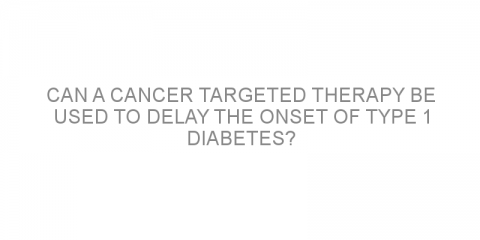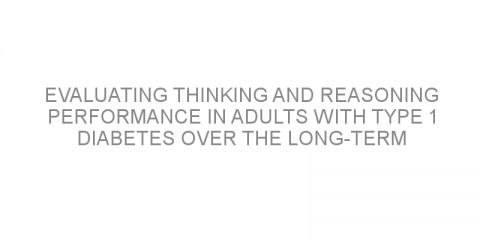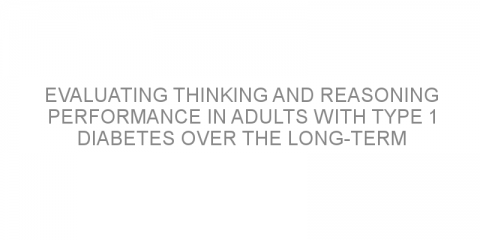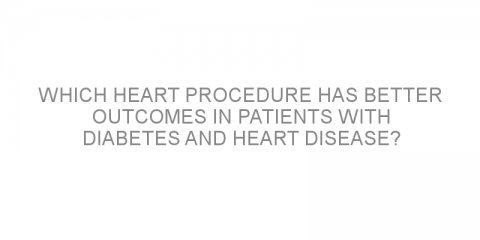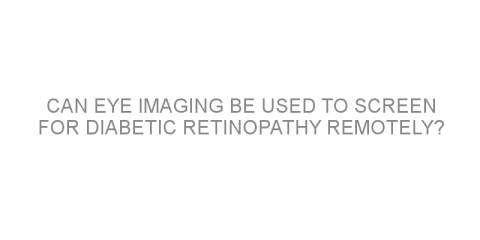In a nutshell This review looked at whether sodium-glucose cotransporter 2 (SGLT2) inhibitors can improve non-alcoholic fatty liver disease (NAFLD) for people with type 2 diabetes (T2D). It found that these medications can improve liver function in these patients. Some background NAFLD is a condition in which fat builds up in the liver. This makes the...
Read MoreDiabetes mellitus Posts on Medivizor
Can a cancer targeted therapy be used to delay the onset of type 1 diabetes?
In a nutshell This study looked at the use of imatinib (Gleevac) in recently diagnosed type 1 diabetes (T1D). It found that imatinib improved pancreatic function and delayed the onset of T1D. Some background T1D is caused by autoimmune damage to the pancreas. This happens when the body's immune system mistakenly attacks its own...
Read MoreEvaluating thinking and reasoning performance in adults with type 1 diabetes over the long-term
In a nutshell This long-term study looked at mental sharpness and coordination as adults age with type 1 diabetes (T1D). It found that blood sugar control over the previous 30 years influences later coordination and memory. Some background People with type 1 diabetes (T1D) are now living much longer and fuller lives, due to improved treatment. Because...
Read MoreEvaluating thinking and reasoning performance in adults with type 1 diabetes over the long-term
In a nutshell This long-term study looked at mental sharpness and coordination as adults age with type 1 diabetes (T1D). It found that blood sugar control over the previous 30 years influences later coordination and memory. Some background People with type 1 diabetes (T1D) are now living much longer and fuller lives, due to improved treatment. Because...
Read MoreDoes real-time glucose monitoring improve diabetic control in patients with type 1 diabetes?
In a nutshell This study compared two methods of continuous glucose monitoring (CGM) for patients with type 1 diabetes (T1D). It found that compared to intermittent monitoring, real-time monitoring led to better glucose control and reduced risk of severe hypoglycemia. Some background Treatment of type 1 diabetes (T1D) has improved in recent years...
Read MoreComparing second-line therapy options combined with metformin for patients with type 2 diabetes.
In a nutshell This study explored the effects of different second-line therapies combined with metformin (Glucophage) in patients with type 2 diabetes (T2D). The data showed that metformin combinations with a sulfonylurea (SU) had the lowest weight loss, the smallest effect of lowering blood glucose, and an overall, reduced health...
Read MoreCan eye drops with citicoline and vitamin B12 help to prevent worsening of diabetic eye disease?
In a nutshell This study looked at the use of citicoline and vitamin B12 eye drops (OMK2) to prevent diabetic retinopathy (DR; eye disease) in patients with type 1 diabetes (T1D). It found that using these drops for 36 months improved eye function tests. Some background Type 1 diabetes (T1D) is a common cause of blindness through...
Read MoreCan melatonin help relieve pain in patients with painful diabetic nerve disease?
In a nutshell This study aimed to explore the effects of melatonin in addition to pregabalin (Lyrica) for the management of painful diabetic neuropathy (PDN). The authors concluded that melatonin added to pregabalin may help in reducing pain related to PDN in patients with type 2 diabetes (T2D). Some background...
Read MoreWhich heart procedure has better outcomes in patients with diabetes and heart disease?
In a nutshell This study compared two heart interventions for people with coronary heart disease and type 2 diabetes (T2D). It found that coronary artery bypass grafting (CABG) led to better long-term outcomes than placing a stent in these patients. Some background Coronary heart disease (CHD) is a condition in which the arteries which supply blood to...
Read MoreEvaluating the outcomes of cotadutide treatment for patients with type 2 diabetes
In a nutshell This study evaluated the outcomes of cotadutide (MEDI0382) treatment in patients with type 2 diabetes (T2D) and obesity. This study concluded that cotadutide treatment improved glycemic (blood sugar) control and weight loss in these patients. Some background T2D is commonly associated with obesity. About 70% of patients with T2D...
Read MoreCan an eye exam be used to check for diabetic nerve disease?
In a nutshell This study looked at the relationship between changes in the retinal nerves (diabetic retinopathy; DR) and changes in the nerves of the hands and feet (diabetic neuropathy; DN) in adolescents with type 1 diabetes (T1D). It found that tests that monitor the retinal nerves such as OCTA which is a quick and inexpensive test, could be...
Read MoreCan eye imaging be used to screen for diabetic retinopathy remotely?
In a nutshell This study looked at remote screening for diabetic retinopathy (DR; eye disease) in a Japanese population. This study showed that remote screening for DR is an effective way of identifying patients who need ophthalmic intervention. Some background Long-term uncontrolled diabetes affects small blood vessels, including in the eyes....
Read More

